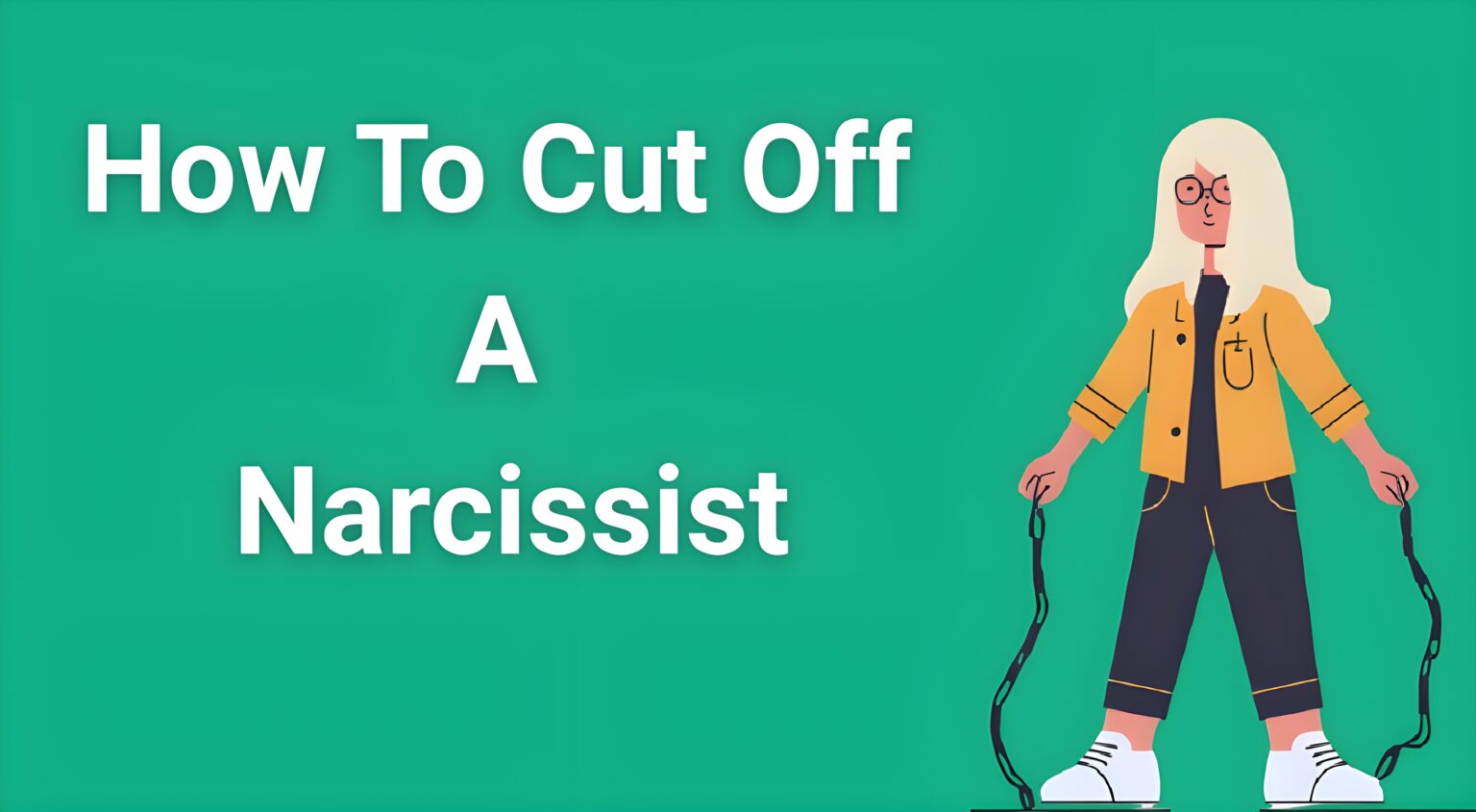You've finally reached that breaking point. The constant walking on eggshells, the mind games, the way they twist reality until you question your own sanity – you know you need to learn how to cut off a narcissist permanently. But here's the brutal truth: cutting off a narcissist isn't just about blocking their number and hoping for the best. It's a strategic process that requires understanding their psychology, protecting yourself from their inevitable retaliation, and rebuilding the sense of self they've systematically destroyed.
- Why Traditional “No Contact” Advice Fails Most People
- The 7-Step Plan: How to Cut Off a Narcissist Successfully
- When Cutting Off a Narcissist Feels Impossible
- Signs You Need Professional Analysis
- The Trauma Bond Recovery Process
- What to Expect After You Cut Off a Narcissist
- Common Mistakes That Sabotage Success
- Creating Your Personal Safety Plan
- Frequently Asked Questions
- Conclusion: Your Freedom Starts With One Decision
Learning how to cut off a narcissist effectively means recognizing that you're not dealing with a normal breakup or family estrangement. Narcissists operate from a completely different playbook, one designed to maintain control and power over their victims. When you threaten that control by attempting to leave, they'll escalate their tactics in predictable yet devastating ways.
Why Traditional “No Contact” Advice Fails Most People
Most advice about how to cut off a narcissist oversimplifies the process. “Just go no contact,” they say, as if it's that simple. But if you've tried and failed multiple times, you're not weak – you're fighting against neurological addiction stronger than substance dependency.
The trauma bond created in narcissistic relationships literally rewires your brain chemistry. Your nervous system becomes addicted to the unpredictable cycle of cruelty and kindness, creating withdrawal symptoms when you try to leave. This is why willpower alone isn't enough, and why you need a comprehensive strategy.
The 7-Step Plan: How to Cut Off a Narcissist Successfully
Step 1: Document Everything and Gather Evidence
Before making any moves, create an irrefutable record of their behavior. Narcissists are master manipulators who will rewrite history to make you the villain in their story.
What to document:
- Screenshots of abusive texts or emails
- Voice recordings (where legally permitted)
- Witness statements from people who've seen their behavior
- Medical records if their abuse has caused physical symptoms
- Financial records if they've controlled your money
This documentation serves two purposes: it provides legal protection if needed, and it becomes your reality anchor when they inevitably try to gaslight you about what happened.
Step 2: Build Your Support Network Strategically
Narcissists systematically isolate their victims, so rebuilding connections is crucial. However, be strategic about who you trust during this vulnerable time.
Identify your allies:
- People who've expressed concern about your relationship
- Friends or family members the narcissist couldn't turn against you
- Professional supporters like therapists or counselors
- Support groups for narcissistic abuse survivors
Warning signs of compromised relationships:
- People who consistently defend the narcissist
- Those who pressure you to “work things out”
- Anyone who shares your private information with the narcissist
Step 3: Understand Their Predictable Response Patterns
When you cut off a narcissist, their response follows a predictable pattern called the “extinction burst.” They'll escalate their behavior before eventually giving up, like a child having an increasingly dramatic tantrum.
The typical escalation sequence:
- Love bombing: Suddenly they're the perfect person you fell for originally
- Bargaining: Promises to change, seek therapy, or fix everything
- Anger and threats: When manipulation fails, aggression emerges
- Smear campaigns: They'll try to destroy your reputation
- Flying monkeys: Using mutual friends and family to reach you
- Hoovering: Attempting to suck you back in with emergencies or crises
Understanding this pattern helps you prepare emotionally and practically for each phase.
Step 4: Implement Complete Communication Blackout
True no contact means exactly that – no contact whatsoever. This isn't temporary; it's permanent. Half-measures don't work with narcissists because any opening is seen as an invitation to resume their manipulation.
Complete communication blackout includes:
- Blocking their number, email, and social media accounts
- Changing your number if necessary
- Blocking their friends and family who might serve as intermediaries
- Avoiding places they frequent
- Not responding to any form of contact, no matter how urgent it seems
If you share children or have legal obligations: Use “gray rock” method – communicate only essential information through lawyers or court-mandated platforms. Never engage emotionally.
Step 5: Process the Trauma Bond Withdrawal
The most challenging part of learning how to cut off a narcissist is managing the intense psychological withdrawal symptoms. Your brain will create compelling reasons to contact them, but understanding this as neurological addiction helps you resist.
Common withdrawal symptoms:
- Obsessive thoughts about the narcissist
- Compulsive checking of their social media
- Physical symptoms like nausea, insomnia, or panic attacks
- Intense loneliness and fear of abandonment
- Doubting your decision and romanticizing the relationship
Healing strategies:
- Practice mindfulness to observe thoughts without acting on them
- Use grounding techniques during panic attacks
- Journal to process emotions and track progress
- Engage in intensive self-care routines
For those struggling with the neurological addiction aspect of trauma bonding, specialized recovery programs can provide structured daily guidance through the most difficult phases of breaking free.
Step 6: Rebuild Your Identity and Reality
Narcissists systematically erode their victims' sense of self and reality. Recovery means reclaiming both.
Identity reconstruction involves:
- Reconnecting with interests and hobbies you abandoned
- Rebuilding confidence through small, achievable goals
- Rediscovering your values and boundaries
- Developing emotional regulation skills
- Processing grief for the person you thought they were
Reality reconstruction includes:
- Challenging the false beliefs they implanted about you
- Developing critical thinking skills to spot manipulation
- Learning to trust your own perceptions again
- Understanding healthy relationship dynamics
Step 7: Future-Proof Against Narcissistic Manipulation
The final step in learning how to cut off a narcissist is ensuring you never become vulnerable to this type of manipulation again.
Protective strategies:
- Understand your own vulnerabilities that made you susceptible
- Develop early warning signs recognition
- Build unshakeable boundaries
- Maintain strong support networks
- Continue therapy or counseling as needed
Sometimes, despite your best efforts, you might find yourself in situations where you can't immediately cut off a narcissist completely – perhaps due to shared custody, workplace dynamics, or financial constraints. In these cases, learning protective strategies while you plan your exit becomes crucial.
When Cutting Off a Narcissist Feels Impossible
Not everyone can immediately implement a complete cutoff strategy. If you're financially dependent, share children, or face other constraints, you need specialized guidance for your specific situation.
High-risk scenarios:
- Domestic violence situations requiring safety planning
- Workplace narcissists who control your livelihood
- Narcissistic parents when you're still a minor
- Shared business interests or legal entanglements
For these complex situations, professional guidance becomes essential. Understanding exactly what you're dealing with and developing a personalized strategy can mean the difference between successful escape and continued entrapment.
Signs You Need Professional Analysis
Sometimes the manipulation is so subtle, so carefully crafted, that you're not even sure if what you're experiencing qualifies as abuse. Gaslighting is designed to make you question your own reality.
Warning signs you need expert validation:
- Constantly questioning your own memories and perceptions
- Feeling like you're “walking on eggshells” constantly
- Apologizing for things that aren't your fault
- Feeling confused about whether you're being too sensitive
- Experiencing anxiety, depression, or trauma symptoms
Getting professional clarity about your specific situation can provide the validation and strategic guidance you need to move forward confidently.
The Trauma Bond Recovery Process
Understanding the neurological aspects of trauma bonding is crucial for anyone learning how to cut off a narcissist. The intermittent reinforcement schedule narcissists use creates one of the strongest forms of psychological conditioning known to behavioral science.
Breaking trauma bonds requires:
- Recognizing the addiction-like nature of the attachment
- Using specific daily practices to rewire your brain
- Understanding why willpower alone fails
- Implementing science-based recovery techniques
- Having structured support through the withdrawal process
Many survivors find that having a day-by-day roadmap through the most challenging phases of trauma bond recovery significantly increases their success rate in maintaining no contact.
What to Expect After You Cut Off a Narcissist
Recovery isn't linear, and it's important to have realistic expectations about the healing process.
Short-term challenges (first 30 days):
- Intense urges to contact them
- Withdrawal symptoms resembling physical addiction
- Doubt about your decision
- Loneliness and isolation
- Confusion and emotional turbulence
Medium-term progress (30-90 days):
- Gradual clarity about the relationship dynamics
- Reduced obsessive thinking
- Beginning to enjoy activities again
- Improved sleep and physical symptoms
- Growing confidence in your decision
Long-term healing (3+ months):
- Authentic sense of self returning
- Healthy relationships becoming possible
- Trust in your own perceptions restored
- Understanding of narcissistic manipulation tactics
- Ability to help others recognize similar situations
Common Mistakes That Sabotage Success
Learning how to cut off a narcissist means avoiding these critical errors:
Mistake 1: Explaining your reasons Narcissists will use any explanation as ammunition for manipulation. Your reasons become their roadmap for changing tactics.
Mistake 2: Responding to emergencies or crises Narcissists are masters at creating urgent situations that “require” your immediate attention. Most are manufactured specifically to break your no contact.
Mistake 3: Checking their social media This feeds the trauma bond and provides them indirect access to manipulate your emotions through their posts.
Mistake 4: Trying to maintain mutual friendships Friends who can't respect your boundaries or who carry messages between you aren't truly neutral.
Mistake 5: Believing they've genuinely changed Change requires years of intensive therapy and genuine self-reflection. Most narcissists lack the capacity for either.
Creating Your Personal Safety Plan
Every situation is unique, and your safety plan should reflect your specific circumstances and risk level.
Essential safety planning elements:
- Emergency contacts and safe places to go
- Financial resources and important documents
- Legal consultation if needed
- Threat assessment and escalation planning
- Technology safety (changing passwords, securing devices)
For high-risk situations involving threats or violence, contact domestic violence resources immediately. Your safety is the top priority.
Frequently Asked Questions
Q: How long does it take to fully recover from a narcissistic relationship?
A: Recovery timelines vary greatly depending on the length and intensity of the relationship, your support system, and whether you seek professional help. Most people see significant improvement within 6-12 months, but complete healing can take 2-3 years.
Q: Will the narcissist ever stop trying to contact me?
A: Most narcissists eventually move on to new sources of supply, but this can take months or even years. Some may periodically attempt “hoovering” even after long periods of silence, especially during major life events.
Q: What if we have children together?
A: Parallel parenting through court-ordered communication platforms minimizes direct contact while protecting your children. Document everything and consider working with a therapist who understands narcissistic abuse.
Q: How do I know if I'm strong enough to maintain no contact?
A: Strength isn't about willpower – it's about having the right strategies and support systems. Many people who failed multiple times succeeded once they understood the neurological aspects and had proper guidance.
Q: Can a narcissist actually change?
A: While personality change is theoretically possible with intensive therapy and genuine motivation, it's extremely rare. Most apparent changes are temporary manipulation tactics rather than genuine transformation.
Conclusion: Your Freedom Starts With One Decision
Learning how to cut off a narcissist successfully requires understanding that you're not dealing with a normal person or a normal relationship. The tactics that work in healthy relationships – communication, compromise, and conflict resolution – don't apply here. Instead, you need strategies specifically designed for dealing with someone whose entire identity depends on controlling and manipulating others.
The seven-step plan outlined here provides a comprehensive roadmap, but remember that every situation is unique. Some people need additional support for trauma bond recovery, others need personalized analysis of their specific situation, and many need guidance for circumstances where immediate departure isn't possible.
The most important thing to understand is that your confusion and difficulty leaving isn't a sign of weakness – it's evidence of the sophisticated psychological manipulation you've endured. With the right knowledge, support, and strategies, thousands of people have successfully cut off narcissists and reclaimed their lives.
Your freedom begins with the decision to stop accepting unacceptable behavior. You deserve relationships built on respect, empathy, and genuine love – not control, manipulation, and fear. The journey isn't easy, but it's absolutely worth it.
The narcissist in your life has taught you that you don't deserve better, that you're too damaged for healthy love, and that leaving would be a mistake you'll regret forever. Every single one of these messages is a lie designed to keep you trapped. Today can be the day you start believing the truth: you deserve so much better, and it's waiting for you on the other side of this decision.






